How to Optimize Your Source Spending
We’ve spent the last six weeks resolving the lead attribution issues in the multifamily industry. No, we didn’t put all of this time and energy into this topic so you can look at it and proud of your numbers (even though you should be proud). We were preparing to take the final step: Budget Optimization.
We want to enable you to make data-backed, cost-effective budgets, like this one!
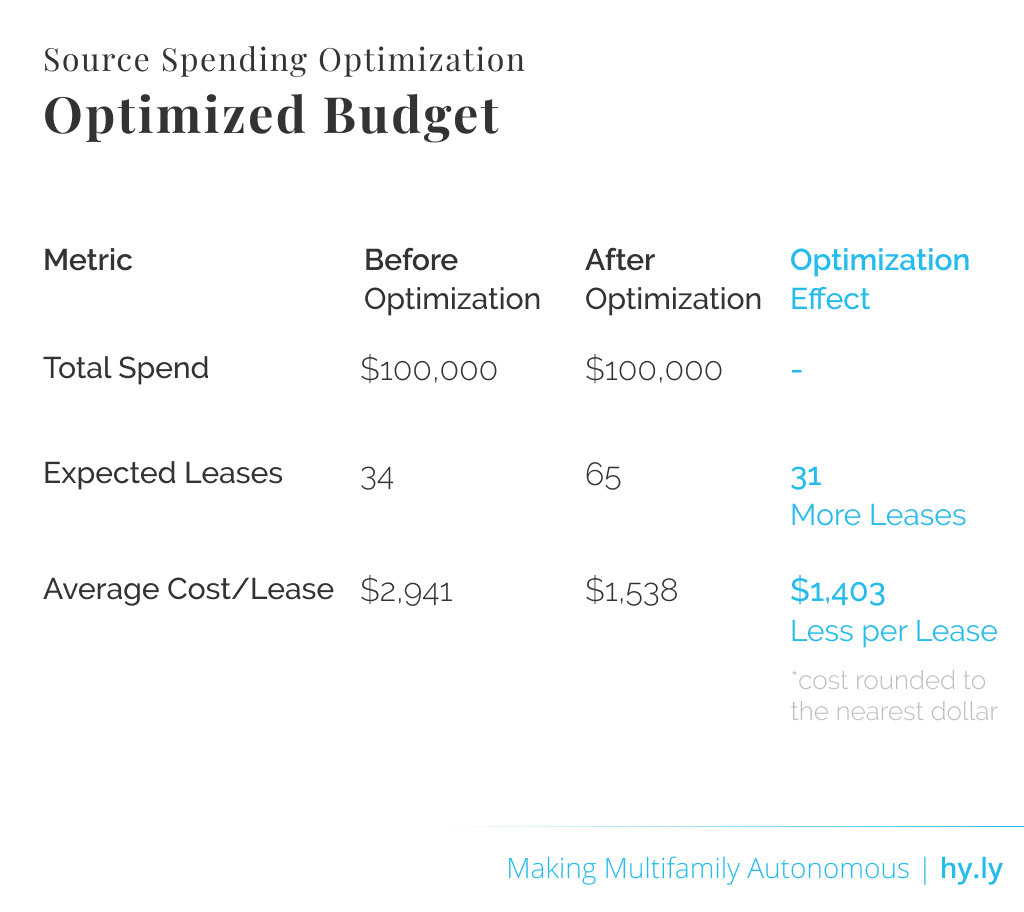
How can you optimize your source spending? Glad you asked.
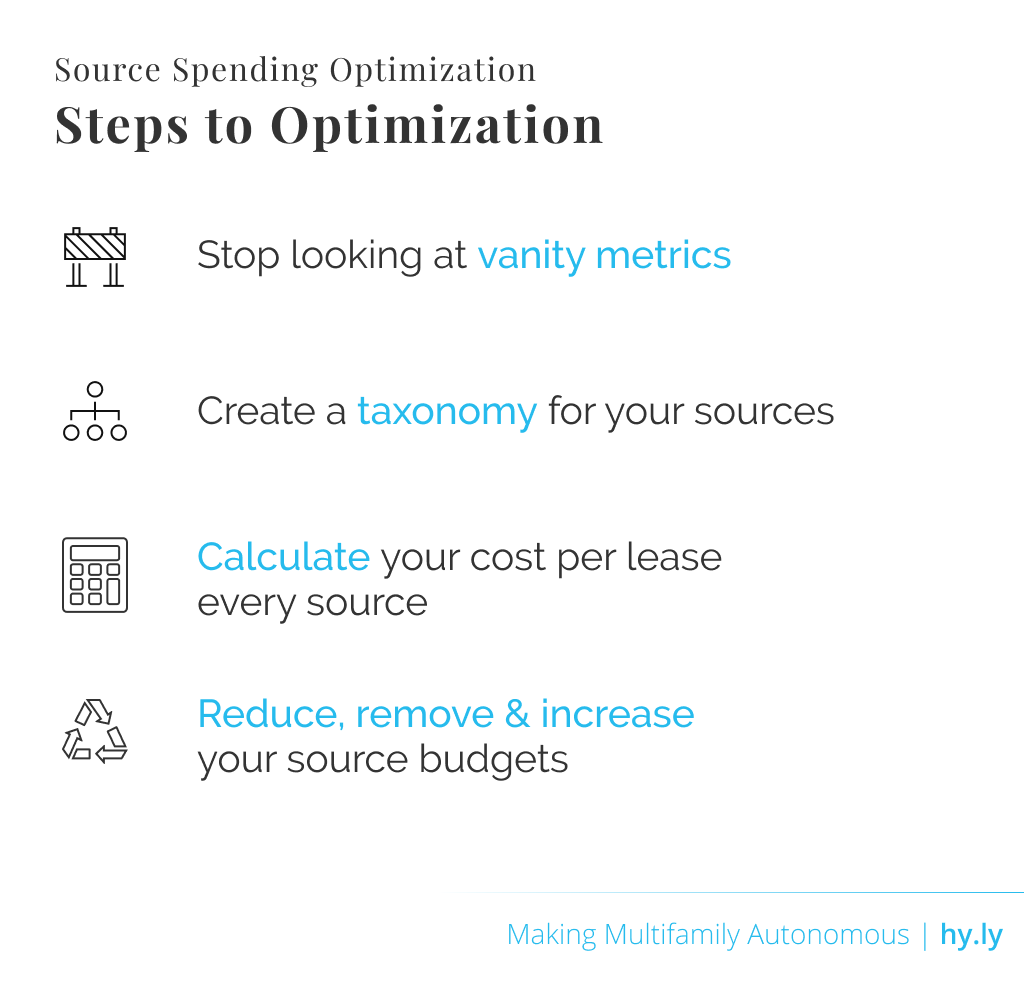
Step 1: Stop looking at vanity metrics
Earlier in this series, we established cost per lease as the metric to use when determining the value of each source.
What we love about this metric, is that is breaks down the real cost of each source. This metric removes unqualified leads from the equation and accounts for budgeting differences.
Once you eliminate the tracking errors, spending bias, and vanity metrics, deciding which sources to invest in is easy!
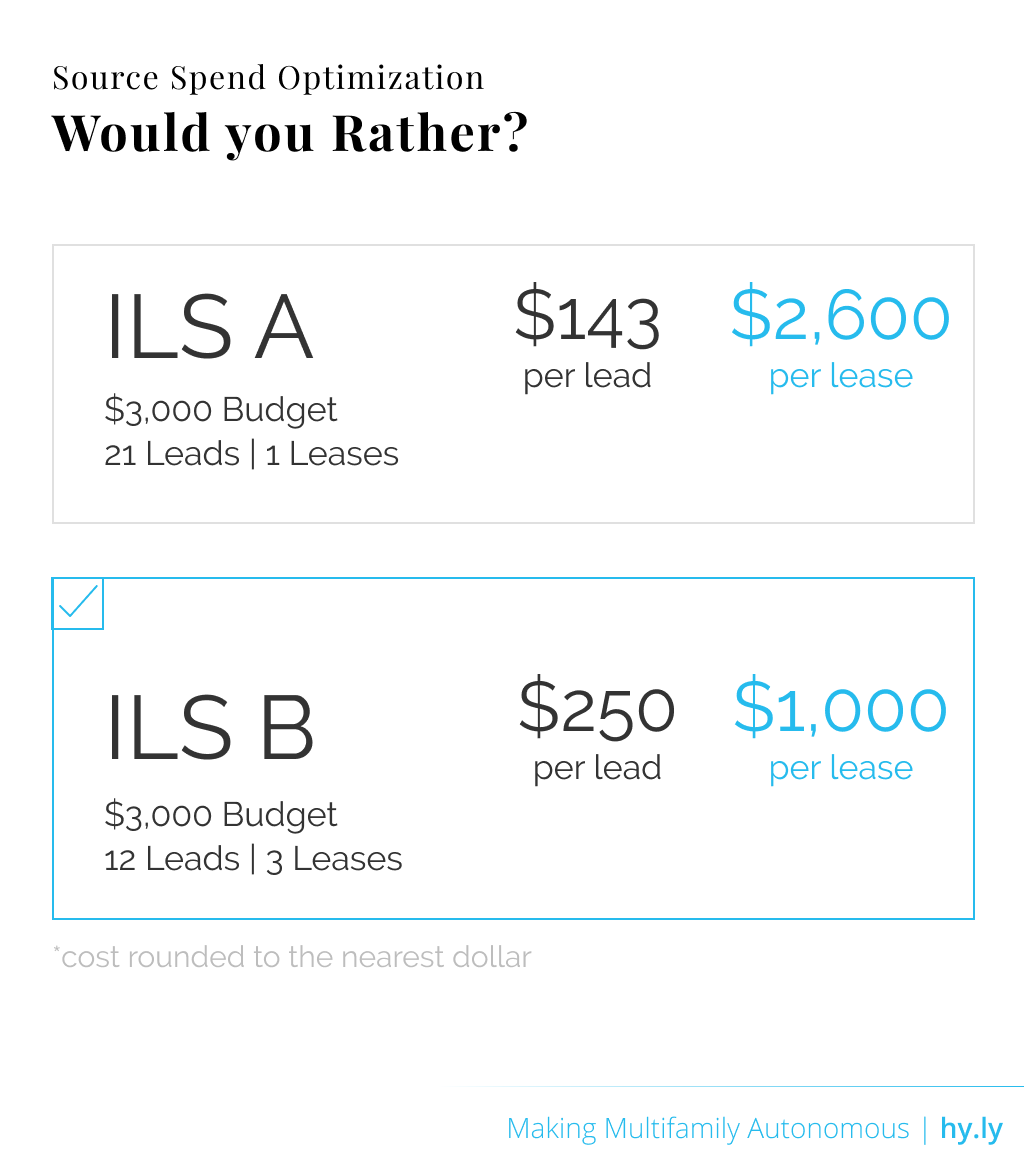
If you want more information about how we decided cost per lease is the most important metric in source cost analysis, check out the full article.
Step 2: Match Tracking Taxonomy to Budget Taxonomy
If Tom Cruise wants a truly impossible mission, he should try to create a cost per lease report when you haven’t classified your sources.
A lot of ILS packages include several different brands. For example, spending with Apartments.com gets you access to ForRent.com, ApartmentFinder, Apartamentos.com and a bunch more. All of these are purchased as a bundle, but are tracked separately. You need to combine the number of leases for all of these brands to see what your investment in Apartments.com is really worth.
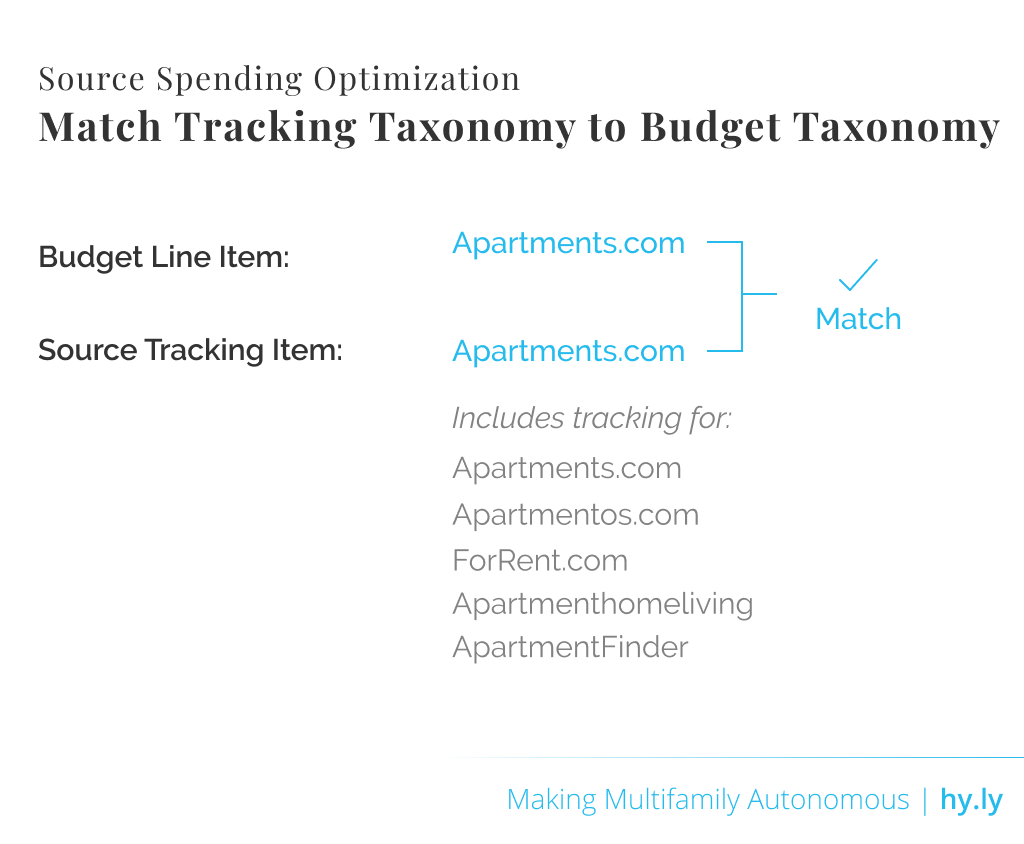
There are two ways you can create a source tracking taxonomy that aligns with your budget line items:
- Use the same tracking tag for all of the brands included in your budget line item.
- Manually combine the results for all of the brands in your budget line item.
Option 1 provides more autonomy in the process, while Option 2 allows for more flexibility and detail in your tracking. Pick whichever works best for your company.
Step 3: Calculate the cost per lease for every source
To find your cost per lease per source, you need two things:
- The marketing budget for each source
- Number of leases from each source (if you have been following our series, you should be able to find this information in your CRM)
Most property management companies have inaccurate source tracking due to OAPS and the disconnect between leads and their CRM. This combination makes it impossible to find how many leases result from each source.
Luckily, you aren’t most property management companies, and you have this guide to prepare you for a cost per lease analysis.
We put a lot of work into fixing the tracking to get to this point and now calculating the cost per lease is easy. Simply divide the source budget by the number of leases for the source to get the cost per lease.
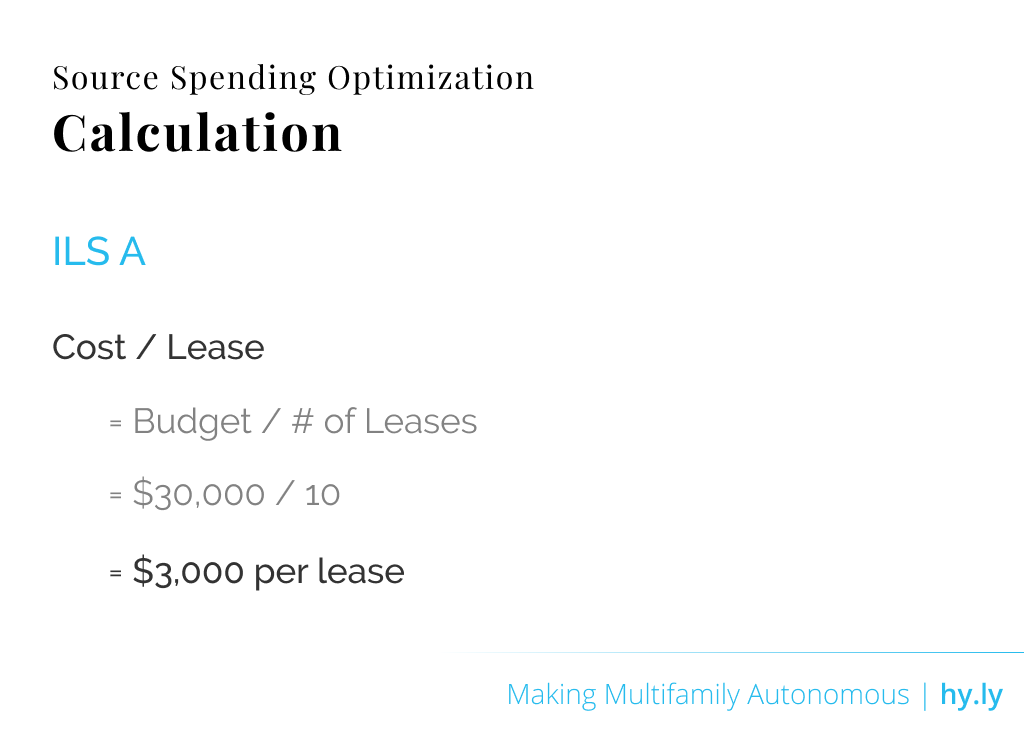
Once you have calculated the cost per lease for every source, you can start to see which sources are most cost-effective.
Now, you are ready to start using lead source attribution to create data-driven marketing plans.
Step 4: Reduce, remove & increase your source budgets
As you may have guessed, we recommend that you increase spending on sources with a low cost per lease and decrease spending on sources with high cost per lease.
Now, don’t go crazy and invest only in the sources with the lowest cost per lease (unless they aren’t bringing any leases in, then maybe it’s time to cut them loose).
It is good to spread the love around and be visible on multiple sources. The more a lead sees your property, the more likely they are to book a tour.
A good rule of thumb is:
- Increase any source below the average cost/lease/source
- Reduce any source above the average cost/lease/source
- Remove any source that resulted in 0 leases
For this example, our average cost/lease/source is $2,213 (this excludes any sources that result in 0 leases).
Check out our example below.
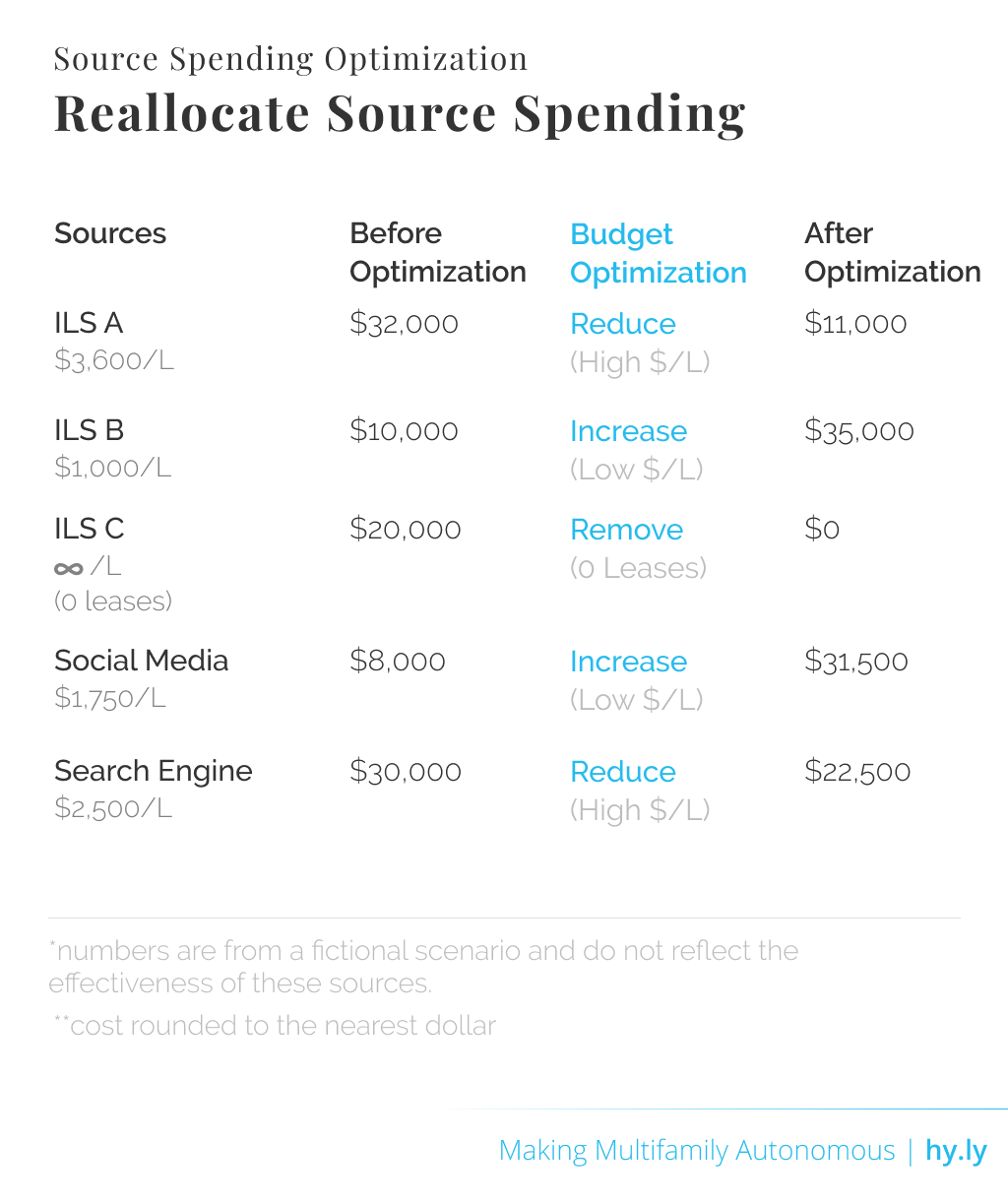
Now that we have adjusted our budget, let’s see our results!

This method of budgeting allows you to maximize your leasing potential by adjusting your spending to be more cost-effective and while still maintaining visibility.
Not to mention the perks you gain from tracking your leads (Think: learning more about your customer’s journey and identifying drop off points on your website).
We would love to hear from you! If you have any lingering questions about lead source attribution, email me at munishgandhi@hy.ly.


